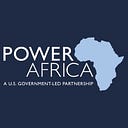Mapping the Future of Electricity Access in Côte d’Ivoire
Power Africa and the national electricity utility harnessed data to accelerate Côte d’Ivoire’s progress toward universal electricity access
In Côte d’Ivoire, where you live plays a significant role in your access to electricity: nearly all households in urban areas have power, whereas only about one-third in rural areas do. Though the country’s grid is vast, connecting to it is expensive — especially for families with lower incomes.
In 2014, the Government of Côte d’Ivoire launched an ambitious plan to achieve universal electricity access by 2025. The Electricity for All program, or Programme Electricité Pour Tous (PEPT), subsidizes upfront grid connection costs for low-income households through a revolving fund so more families can afford to access power.
With Power Africa support, PEPT is establishing more equitable access to power nationwide. In the country of 25 million, PEPT has already connected more than 1.2 million homes and businesses and will facilitate another 400,000 connections over the next two years.
Power Africa and Côte d’Ivoire’s electricity utility, Compagnie Ivoirienne d’Electricité (CIE), are collaborating to assess the impact of the program and engage private sector stakeholders to ensure its long-term sustainability. A key element of this work involves analyzing and sharing data about electricity access rates in different parts of the country. Through the Connexions Plus collaboration, Power Africa and CIE developed an innovative data dashboard to visualize access gaps and accelerate electrification efforts.
Using Data to Improve Understanding and Drive Impact
CIE recognized that measuring the impact of PEPT would be critical to the program’s ongoing success. The utility needed a platform that would allow them to edit, access, update, and display geospatial data, as well as visualize trends, perform analyses, and track the progress of connections in real time to help them make strategic decisions about the future of PEPT.
Power Africa worked with CIE to bring this vision to life through the PEPT Connections Dashboard. The online tool aggregates the country’s electricity data in an accessible, sharable platform. The information can also be easily customized based on CIE’s needs. Power Africa worked with CIE to build the tool, upload data, and train staff to update, modify, and manage the platform moving forward.
“Before the PEPT Connections Dashboard, it was difficult to understand and visualize what electrification data were telling us. Now, we have a simple tool that CIE, government officials and others can use to see which communities are easily accessing power and which still need to be connected to the grid,” said Léandre N’Dri, Senior Director of Economic Studies and Strategy at CIE. “We have a better understanding of where to focus our efforts and how we can expand access quickly.”
In addition to measuring PEPT’s impact, the dashboard’s easy-to-use visualizations make it an important advocacy tool to demonstrate the success of PEPT and garner support for future efforts. Policymakers can see exactly which communities are not yet connected to power, while also understanding how the country’s population is growing and where future demand may emerge.
Replicating Cote d’Ivoire’s Success across the Region
The PEPT Connections Dashboard is a promising model for other countries and utility companies to better visualize and analyze grid data. Power Africa developed criteria to help other countries’ power companies and policymakers determine if the tool is right for them. The team is also looking for ways to work with regional institutions to scale the dashboard across West Africa. Power Africa is even exploring how to adapt the dashboard for sector-specific needs, like connecting more health facilities to electricity.
Côte d’Ivoire’s innovative approach demonstrates the promise and potential of data to affect positive change and power communities, from the local to the national level. Explore the dashboard and learn more about the country’s work here.
